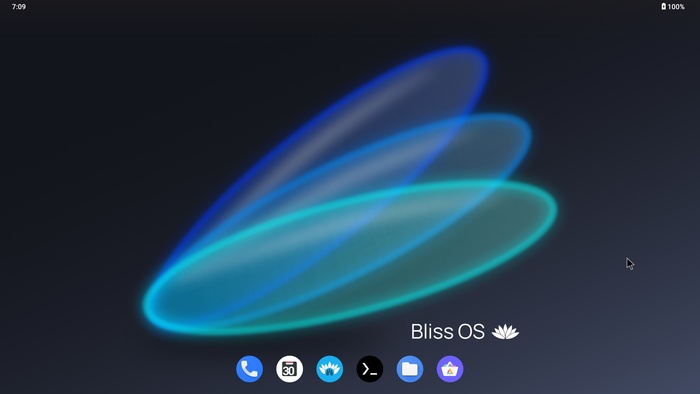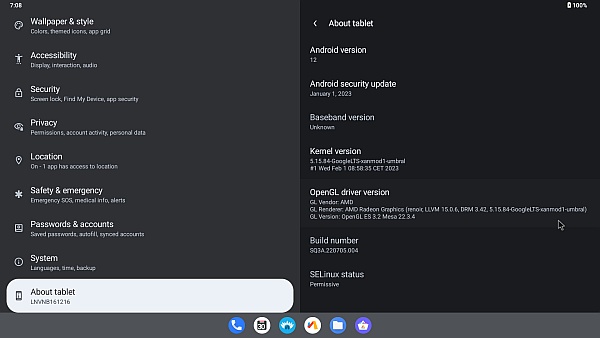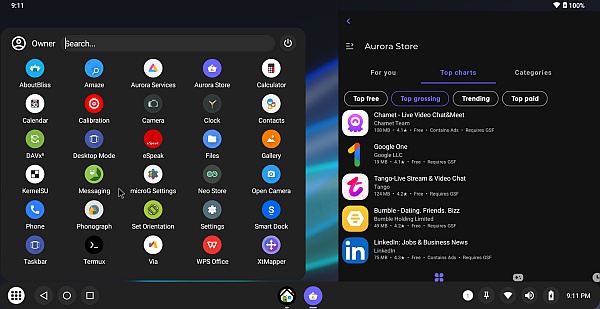Available June project update Bliss OScontinuing development Android-x86, a port of the Android platform for the x86 architecture (most of the Android-x86 developers moved to the Bliss OS project). Bliss OS provides ready-made builds with a user environment based on Android, optimized for use on PCs, tablets and laptops. Bliss OS can also be used to replace Chrome OS on Chromebooks. Project developments spread licensed under Apache 2.0.
The project supports several branches: stable branches Bliss OS 14 and Bliss OS 15 based on Android 11 and 12, beta branch Bliss OS 16 based on Android 13 and Bliss OS Zenith branch based on Android 13 with the latest changes from the Bliss OS project and the latest version of the Linux kernel. Assemblies prepared in versions with Google services (GApps) and open alternatives (F-Droid, Aurora And microG).
Advertisement
The system environment is designed as a monolithic image, mounted in read-only mode and updated atomically with updates delivered in OTA (over-the-air) mode – two system partitions are used, one of which is active, and the update is copied to the second, passive one . It is possible to install modules Magisk without writing data to the system partition.
Components from the Android platform are maintained by Bliss OS developers as part of a related project Android Generic, which provides a set of scripts and patches for quickly building firmware prototypes based on code from the AOSP (Android Open Thanks for reading Project) repository. A translator layer is provided Native-Bridge for running Android applications built for ARM/ARM64 architectures on x86 systems.
The package includes KernelSU, with the help of which the user can obtain root rights in the system and delegate them to selected programs. Bliss OS fully supports systems based on Intel and AMD processors with built-in GPUs, as well as most configurations with AMD graphics cards (NVIDIA GPU support leaves much to be desired).
The graphics stack is based on standard drivers from the Linux kernel and the Mesa project. The user experience is close to traditional desktop environments – providing a Blissified application bar, a “Bliss” application menu and a multi-window interface. In addition to running in desktop mode, which is optimized for keyboard and mouse control, Bliss OS also supports switching to tablet mode, designed for touchscreen control (for example, this mode can be used on tablets or convertible laptops with a touchscreen).
Advertisement
Among the changes in the new builds of BlissOS 14.10.2, 15.9.1 and 16.9.6:
- Updated versions of Mesa 24.0.8, Libva 2.21.0 and LLVM 17.0.6 (needed to build the radeonsi driver).
- Changes transferred from main project branches minigbm (Mini Graphics Buffer Manager, manages buffers during rendering) and drm_hwcomposer (enables the graphics subsystem of the Android platform to work on top of the standard graphics stack of the Linux kernel).
- The latest security fixes have been transferred from Android and LineageOS.
- The process of initializing sound devices has been completely redesigned. The sof-firmware (Sound Open Firmware) firmware set has been updated to version 202403. Many sound problems have been resolved.
- Added option FORCE_TSCAL=1 to use the TSCalibration touchscreen calibration application at boot time.
- In stable branches, the Linux kernel has been updated to version 6.1.84, and in the Bliss OS Zenith branch to version 6.9.3 with patches from projects Android-x86, xanmod And Nobara Linux.
Thanks for reading:


